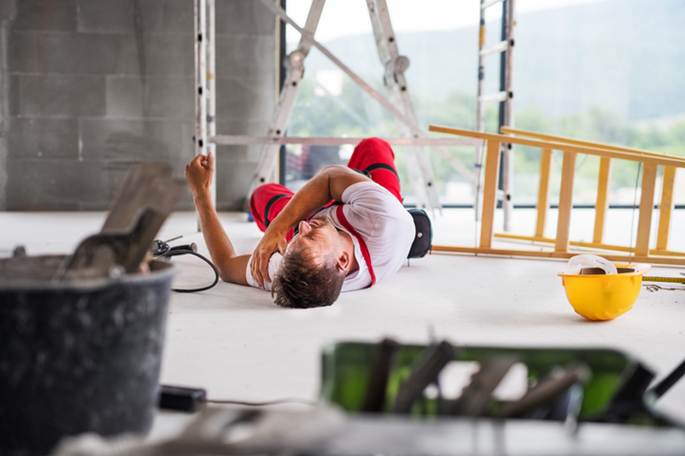
Unsafe Ladder Accidents: Legal Rights Explained
One Slip. One Fall. One Life Changed Forever.
You’re halfway up the ladder, focused on the job like always. You've done this dozens, maybe hundreds, of times. Then out of nowhere, your foot slips... or the rung gives way... or the whole ladder shifts. It happens in an instant. And just like that, everything changes.
These aren’t minor bruises we’re talking about. Ladder falls can break your back, rattle your brain, or leave you stuck in a hospital bed for months. Some people never return to work. Others never walk the same again. And while that kind of trauma is hard enough to live with, trying to get justice afterward can feel just as overwhelming which is why many turn to Horn Wright, LLP, and its experienced construction accident attorneys for guidance and support.
The laws surrounding ladder accidents vary by state. In New York, protections tend to lean more in favor of injured workers. You might not have to prove negligence the way you would in Maine, New Hampshire, or Vermont. That difference could shape everything about your case, how it unfolds and what you’re entitled to.

Ladder Falls Happen Every Day And They Shouldn’t
Ladders are everywhere on job sites. Painters, electricians, roofers, you name it, everyone uses them. But just because they’re common doesn’t mean they’re safe.
Every year, thousands of workers end up seriously hurt from ladder falls. And not because they’re reckless. Because the conditions around them failed.
Here’s how that usually looks:
- The wrong ladder gets used for the job
- Rungs are slick with grease or rain
- Stabilizers are missing or broken
- No one checked the ladder for damage beforehand
When deadlines get tight and supervisors want speed over safety, things slip through the cracks. And it’s workers like you who get hurt.
This kind of neglect is similar to what happens in trip and fall cases involving uneven flooring. There’s a known hazard. But no one fixes it until someone’s already injured.
Cheap Gear and Broken Promises: Why Workers Fall from Heights
Ever worked with a ladder that looks like it belongs in a junkyard? You’re not the only one.
On too many job sites, damaged equipment keeps getting used. Wobbly frames, bent legs, missing feet, none of that stops work from continuing. And sometimes, the gear was never safe to begin with.
There are standards. The OSHA ladder safety regulation outlines what makes a ladder safe to use. But if employers ignore those rules, and many do, you’re the one left exposed.
New hires are often rushed into tasks without training. No one explains how to inspect a ladder. No one double-checks the setup. Everyone’s moving fast and assuming the equipment will just work.
It’s not so different from lighting-related falls, where a simple failure to replace a bulb leads to serious injury. In both cases, someone made a choice not to address a risk and someone else paid the price.
Who’s to Blame When You Hit the Concrete? (Spoiler: It Might Be Both)
You’ve fallen. You’re in pain. You can’t work. And you’re left asking the question, who’s responsible?
The answer isn’t always simple.
If your employer didn’t do regular inspections, skipped safety protocols, or failed to provide training, they may be held accountable under New York Labor Law § 240. That law, often called the Scaffold Law, was designed to protect workers from height-related injuries, even if the employer didn’t directly cause the incident.
If someone else was managing the job site, liability might shift to supervisors or contractors. It all depends on who had control.
And then there’s the ladder itself. Was it poorly designed? Manufactured with weak materials? If so, you might also have a case against the company that made or sold it. That’s how product liability comes into play and why it’s important to consider every angle.
From Workers’ Comp to Big Lawsuits: How People Recover
Once you’ve been injured, there are usually two legal tracks to think about. Each offers different benefits.
Workers’ Comp Might Cover the Basics
Workers’ comp is usually the first path people turn to. It’s meant to provide basic protections like:
- Medical coverage
- Partial wage replacement
- Temporary or permanent disability payments
It sounds helpful, and it is, but it won’t cover everything. Emotional trauma, long-term pain, and future earning losses usually aren’t part of the deal.
And waiting for answers can be maddening. Plenty of people are left wondering why their case still hasn’t settled while expenses keep adding up.
Third-Party Lawsuits Open More Doors
If someone besides your employer played a role, like a property owner, subcontractor, or ladder manufacturer, you might be able to file a separate lawsuit. These cases can help you recover full lost income, pain and suffering compensation, mental and emotional damages, and future losses tied to mobility or lifestyle changes.
Many people hesitate to file. Not because they’re unsure about their injury, but because they don’t know what it means to start a lawsuit. Learning what’s ahead can make it all feel more manageable.
Cheap Metal, Broken Rungs: Holding Manufacturers Accountable
Sometimes, it’s not the job site or the people running it. It’s the ladder itself.
When manufacturers rush production, use poor materials, or skip safety testing, the result is often defective ladders. And unfortunately, those defects usually only become obvious after someone has already been seriously hurt.
Filing a claim isn’t just about money. It’s about exposing dangerous products so others don’t suffer the same fate. Taking action can lead to safer tools and tighter standards across the board.
Time Isn’t on Your Side And That’s Not Fair
The clock starts ticking the moment you’re injured.
Evidence disappears. Ladders get tossed. Witnesses move on. And yes, deadlines creep up.
There are strict legal limits on how long you have to file a claim. If you miss them, your options shrink fast. Meanwhile, insurance companies are already working against you. They’ll push early settlements and hope you’re too overwhelmed to push back.
That’s why acting quickly, once you’re safe, is critical. It’s not just about filing a claim. It’s about protecting your future.
Hurt on a Ladder? Take the First Step Toward Justice
What you’re dealing with is real. It’s painful. It’s stressful. And it probably feels like no one really gets it.
But your experience matters. What happened to you shouldn’t have happened and you have every right to hold the responsible parties accountable.
Reach out to Horn Wright, LLP, to speak with construction accident attorneys who know how to fight for injured workers and are ready to listen to your story.

What Sets Us Apart From The Rest?
Horn Wright, LLP is here to help you get the results you need with a team you can trust.
-
Client-Focused ApproachWe’re a client-centered, results-oriented firm. When you work with us, you can have confidence we’ll put your best interests at the forefront of your case – it’s that simple.
-
Creative & Innovative Solutions
No two cases are the same, and neither are their solutions. Our attorneys provide creative points of view to yield exemplary results.
-
Experienced Attorneys
We have a team of trusted and respected attorneys to ensure your case is matched with the best attorney possible.
-
Driven By Justice
The core of our legal practice is our commitment to obtaining justice for those who have been wronged and need a powerful voice.

